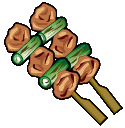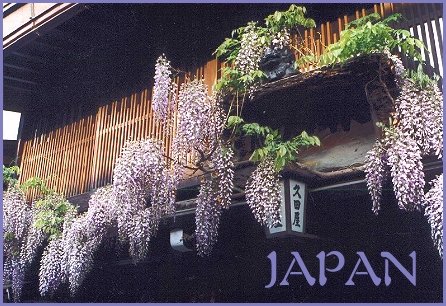 |
 |
Because Japan is an island country with little flat land and heavy population densities, most people who live in cities live in apartments. Most of these apartments haven't any yards. Sidewalks separate buildings from the street are rare. In rural areas, homes are often one or two story homes. They have the roofs and walled gardens.
In Japanese homes, the rooms are small by our standards. One room has a variety of uses, such as living, dining, and sleeping. Lightweight sliding panels made of paper are pasted on frames made of wood. These serve as their walls. They can slide back and forth to make the rooms larger.

At night, the living room may become the bedroom. A futon, a thick cotton padding, is brought out and placed on a woven straw mat called a tatami. In the morning it is rolled back up and stored until its next use.
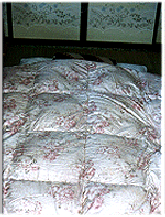
During the day, a low table may be placed in the center of a room for meals. While eating, people sit on large cushions instead of chairs.
To keep the tamami clean the Japanese remove their shoes when entering a home. These shoes are replaced by slippers used only for the indoors.
Some people even have outdoor boots for their dogs. When you enter a Japanese home, you come first into a small entrance way. This is where you must take off your shoes and put on the slippers.

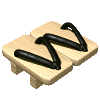
A Japanese meal usually includes several dishes. Each type of food is served in different bowls or dishes. The evening meal is the main meal. All family members come together and eat. They eat with chopsticks, which they call, hashi.

Most families must shop every day so they have fresh vegetables, fish and any other food they might use.
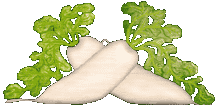
Rice is the staple of the Japanese diet and is served at every meal. The word for breakfast means "first rice." Fish is the main source of protein, and seafood is the main course. The Japanese eat three times as much fish as meat. Two popular seafood dishes are sushi, patties of rice with vinegar and raw fish wrapped in seaweed, and sashimi, raw seafood dipped in a tangy sauce. Other favorites are: tempura, batter fried fish and vegetables; sukiyaki, strips of beef and vegetables; and yakitori, squares of grilled chicken served on a skewer.
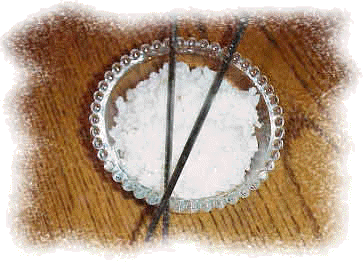
Since Japan is a nation of islands surrounded by the ocean, it isn't surprising that the products of the sea appear on their dinner table daily. In addition to fish, seaweed is used for wrapping food like sushi and for flavoring foods. Miso soup is a favorite which can be served for breakfast, lunch or dinner. It is made from a soybean paste dissolved in a seaweed stock. Soy, is loaded with vitamins and nutrients. In fact, they eat much healthier than we do in the United States.
If you were living in Japan this is what your meals might consist of.
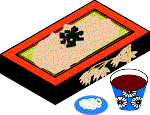
Breakfast: hot steamed rice, small pieces of grilled, salted fish; pickled vegetables; miso soup; green tea
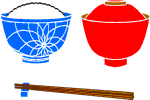
Lunch: boiled rice, fish or meat, vegetables, tea
Dinner: rice, clear soup, broiled fish with soy sauce, steamed custard made with chicken and vegetables, tempura, pickles, rice, tea
